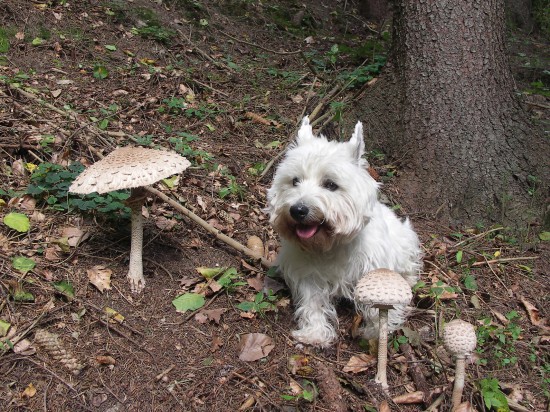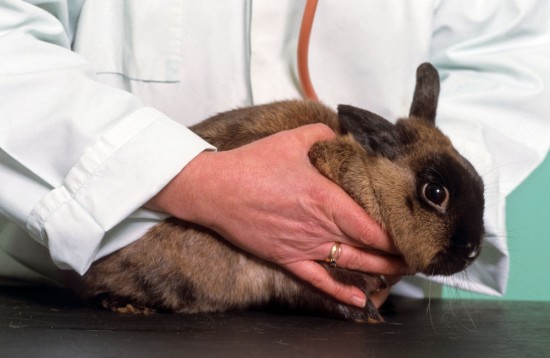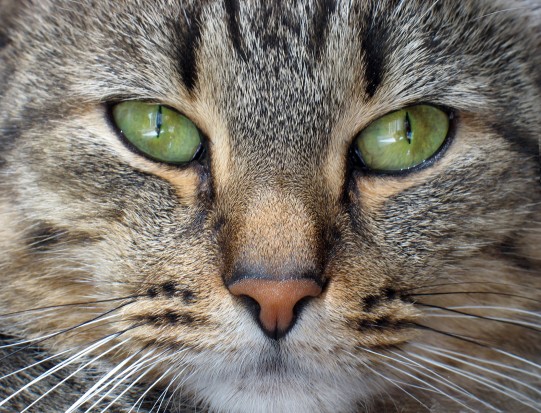
There are many thoughts and hypotheses, but in reality, we do not have an accurate timeframe regarding the exact origins of the dog or its domestication history.
We do know that its closest ancestor is the wolf, taxonomically it forms part of the group of animals called Canidae, these include wolves, jackals, coyotes, dingoes, and foxes. It is now widely accepted that Canis lupus familiaris (originally classified as Canis familiaris) reclassified in 1993 by the Smithsonian Institute to reflect its wolf ancestry, has wolf like traits and is almost certainly derived from wolf stock.
Today’s domesticated dog is probably a mutated form of the smaller Middle Eastern wolf. Archaeological evidence points to a time-period some 12000 to 15000 years ago when we started creating permanent settlements. This was towards the end of the Mesolithic period and the start of the Neolithic. The earliest of these settlements are to be found in the fertile area now known as Northern Israel. These Natufian villages the oldest recorded settlements, it is now widely believed that this where modern dog may have been domesticated. However, heated debates and counter theories are still ongoing.
Archaeologists have discovered remains of a burial site at a Natufian site called Ain Mallaha, in which an old man and a young pup are buried together, the mans left hand is cradling the dog. The puppy was probably killed to give the man company on his journey to the afterlife. What is so important about this find is that it is the earliest chronological evidence pointing to domestication. And suggests that humans had starting accepting dogs not just as pariahs and vermin but as companions and trusted pets, it therefore points to dogs probably being one of the very first domesticated animals.
The picture of the noble savage striding across the landscape his stone axe and spear at the ready, his faithful wolf-dog padding along next to him is a compelling vision, we could surmise that he had killed the adult wolf and located the den where the wolf cubs lay. Taking pity on them, he then took them back to his camp. Then through his ministrations and love they became domesticated therefore were the forerunners of today’s modern canines. This fanciful idea is somewhat wide of the mark in the reality stakes.
In essence, you cannot domesticate a wolf, you can to some extent tame it to such a degree that it will accept human contact, but you will never domesticate it. To tame a wolf you need to hand rear it. You would need to start this before the cub was 8 days old, prior to the eyes opening, remember he was born deaf and blind and it takes some time for these senses to develop.
This would build an olfactory and tactile map of its surroundings and us as we handle them, they then come to accept our smell and touch, You would need to stay with that wolf 24 hours of the day until it was 16 weeks old, then if you had done everything right it may just accept some human contact.
However if that wolf then bred with another tame or wild wolf then the pups/cubs would be born wild, in other words the hand rearing would have to continue all over again. Therefore, that begs the question where did dogs come from and how did they become domesticated, if we cannot domesticate today’s wolf with all our supposed scientific mastery.
Many including myself are of the opinion that they effectively domesticated themselves. They took advantage of an ecological niche and mutated from their wolf cousins to fill that niche. The trigger was our move from early stone age nomadic hunter/gatherer between the Mesolithic and Neolithic periods, when we started inhabiting permanent settlements and becoming hunter/farmers, my belief is it was that change that stimulated the rapid mutation.
It would appear highly coincidental, that when we started to cultivate crops and domesticate animals, which in turn required permanent or semi permanent settlements that these animals suddenly appeared? The drawings of animals in the Chauvet-Pont-d’Arc cave in France show no images of dogs, these paintings were made approximately 31,000 years ago; others cave drawings of less that 31000 years also do not depict doglike creatures
Wolves have an almost pathological fear of man. You cannot blame them; we have persecuted these noble animals since time immemorial. We have hunted them for their pelts and their meat and have something of a love hate relationship with them. Just look at the bogey man stories of the werewolf that have been passed down over the centuries.
We are fearful of these creatures and rightly so, they can be extremely dangerous, wolves and wolf hybrids do not make good pets, they are unpredictable and immensely powerful. It is illegal in the UK to own or keep a wolf or wolf hybrid without a wild animal licence, which are difficult to obtain. The nearest we can get to a wolf is called the Utonagan Pronounced Yewton-Argan two words, which started as a cross between German Shepherds, Huskies and Malamutes plus a few other odds and ends thrown in . They are stunningly beautiful and look but fortunately do not act wolf-like..
Given the pathological fear wolves have of humans it is quite likely that the incidence and appearance of dogs at the time of our settlements may well have been caused by a hybrid type mutation of the local wolf populace. Other than sex/reproduction, food is very high on the list of vital resources and we are a constant source of that. These Stone Age dog/wolf mutants must have thought Christmas had come all at once, a steady and constant stream of sustenance not having to hunt for it. Just lying about for all to take. This may have been the key for some of these wolves to lose their fear of man.
Dogs like faeces particularly human ones; it is apparently a probiotic and a valuable source of proteins. In part if the Indian subcontinent you can see village dogs following naked children about waiting for them to defecate so they can claim there prize, in parts of Africa when a baby is born they present it with a puppy as a botty-wiper. To prehistoric dogs our middens, latrines and village dumps must have appeared like manna from heaven.
Dogs have an amazing knack of inveigling themselves to humans they are born with the Ahhhhhhhhh factor, large heads and saucer size eyes make then almost irresistible to the primate that is in us all. As part of the primate family, we are hard-wired to want to cuddle something with the head and eye attributes of a pup. That is what makes them so successful in the evolutionary chain.
In what was a very small time-frame some 15000 years, they have gone from zero to 400 million. Paradoxically the wolf population has shrunk to a meagre 200 thousand At one time, the wolf (Canis lupus) had the most extensive range of any land mammal (excluding man), which included the entire Northern Hemisphere north of 13o – 20o north latitude.
Its range has now been cut back extensively mainly by the action of man. Many countries that formerly had wolf populations, including Great Britain, Mexico, and Japan, now have none, and in other countries, such as the United States, wolves occupy only a fraction of their former territory.
So how has this doggy success story happened? To all intents and purposes, dogs are highly successful biological parasites they are on a par with the ubiquitous cuckoo. They con us with their winning ways, cost us a fortune in food, time and vet bills and what do they do in return with the exception of a few working dogs like assistance, sniffer, and gundogs? Basically nothing.
Look at it this way if the human race all died tomorrow because of some nasty pandemic virus what would happen to the dogs? They cannot hunt for themselves they have lost that ability through domestication, therefore within a few generations they would probably all die out. Given the same scenario if a pandemic virus killed all the dogs how many of us would die as a result? The answer is none! it would upset a lot of people but it certainly would not have the affect that our demise would have on the dog population.
Having said all that I am an out and out dog nut, I am passionate about them despite their parasitic ways. Though their passing may not have the same disastrous affect, the world would certainly be a sadder lonelier place without our very best friend the dog.
Stan Rawlinson
Dog Behaviourist and Obedience Trainer, who has owned and worked dogs for over 25 years, starting with gundogs then moving to the behavioural and obedience side of training companion dogs. He now has a successful practice covering
Greater London, Surrey, and Middlesex.
Stan is recommended by numerous Vets, Rescue Centres, and Charities. He writes articles and comments on behavioural issues and techniques for dog magazines including Our Dogs, Dogs Monthly and K9 Magazine and Shooting Times.
He is also the founder member of PAACT The Professional Association of Applied Canine Trainers
 Mushroom Poisoning And Toxicity In Dogs
Mushroom Poisonin
Mushroom Poisoning And Toxicity In Dogs
Mushroom Poisonin
 How To Cope With Dogs Suffering With Malassezia Dermatitis
How To Cope With
How To Cope With Dogs Suffering With Malassezia Dermatitis
How To Cope With
 Seven Interesting Facts About Tortoiseshell And Calico Cats
Seven Interesting
Seven Interesting Facts About Tortoiseshell And Calico Cats
Seven Interesting
 Fly Strike In Rabbits
Fly Strike In Rab
Fly Strike In Rabbits
Fly Strike In Rab
 Interesting Facts About A Cats Nose
Interesting Facts
Interesting Facts About A Cats Nose
Interesting Facts
Copyright © 2005-2016 Pet Information All Rights Reserved
Contact us: www162date@outlook.com